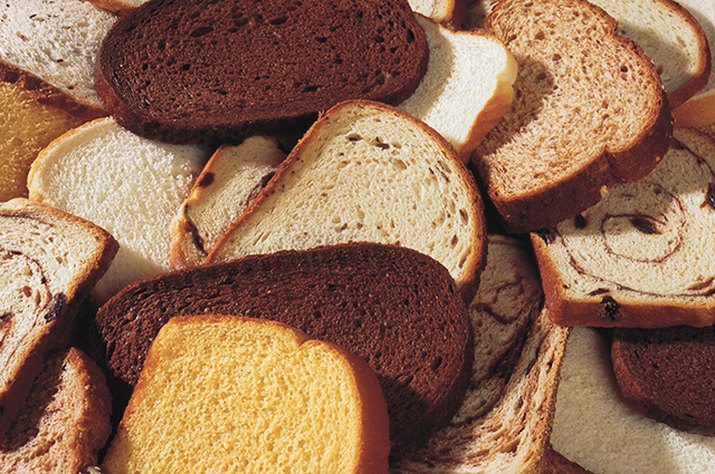
Overview
Additives are used in commercial breads for various reasons. Antioxidants prevent spoiling and extend shelf life; dough conditioners achieve a desired texture; sweeteners are used for flavor enhancement and to retain moisture. These additives usually have scary chemical names, and some may indeed be quite harmful to human health. The U.S. Food and Drug Administration, the agency responsible for ensuring the safety of most packaged foods, does not require testing of new additives before allowing them for use in food. Rather, substances are considered "generally recognized as safe," or GRAS, by qualified experts until proven unsafe by scientific studies. Unfortunately, some of the GRAS ingredients in use today have been linked to negative health effects, including heart disease, diabetes and cancer. Some additives are worse than others, and the hardest-to-pronounce ingredient is not always the most harmful. Read on to find out which bread ingredients are scary, scarier and scariest. On the final slide, we provide recommendations of seven bread brands you can choose in order to avoid ALL of these awful additives.
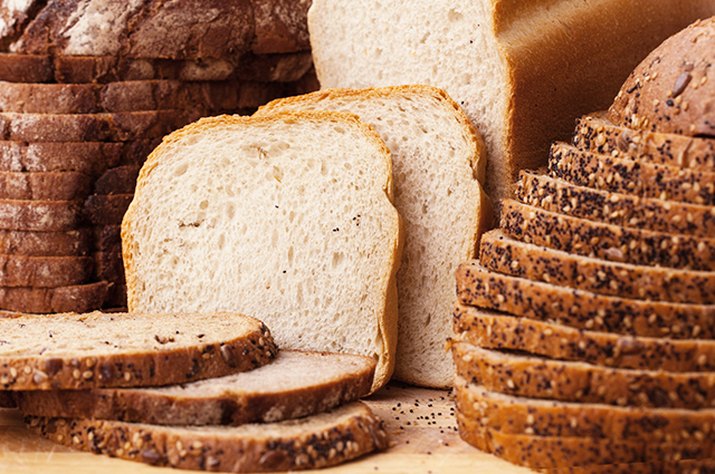
1. Potassium Bromate
Potassium bromate is an oxidizing agent used to "mature" bread flour, which helps strengthen the dough and improve rising, giving it more volume. The International Agency for Research on Cancer (IARC) -- part of the World Health Organization -- whose mission is to prevent cancer through researching the potential for human exposure to carcinogens, considers potassium bromate dangerous. The IARC reports that no data are available to assess the potential carcinogenicity of the compound in humans. However, food-additive-grade potassium bromate causes kidney and thyroid tumors when fed to rats. Although potassium bromate is on California's Proposition 65 list of chemicals known to the state to cause cancer, the FDA approves the additive for use. Bromate has essentially been banned worldwide except in the United States and Japan. Because of its utility in bread making, you can even buy "bromated flour" (made with potassium bromate) in the grocery store. The compound may be listed either way on an ingredient label. Avoid breads containing this additive.
Read more: Bulletproof's Dave Asprey on How to Biohack Your Best Self

2. Azodicarbonamide
This additive is used as a dough conditioner to improve the texture and strength of bread dough. The compound, abbreviated as ADA, received tremendous media attention when the sandwich chain Subway announced it would remove ADA from its bread dough due to its potential harmful health effects. Concerns center on semicarbazide (SEM), a chemical that forms when ADA is broken down during bread making. According to the FDA, "At high levels, SEM has been shown to increase the incident of tumors when fed to female mice, but not to male mice or either gender of rat." The government agency goes on to say that the levels of SEM fed to these rodents "far exceed estimates of human exposure from the consumption of ADA-treated flour or bread products." Accordingly, azodicarbonamide is still approved for use as a food additive despite the fact that it "is not necessary to make bread and there are alternative ingredients approved for use available." When choosing breads -- or any foods -- it's best to steer clear of any ingredient that is being investigated as potentially carcinogenic.
Read more: Which Type of Yogurt is Best? The PROs and CONs of 13 Different Kinds
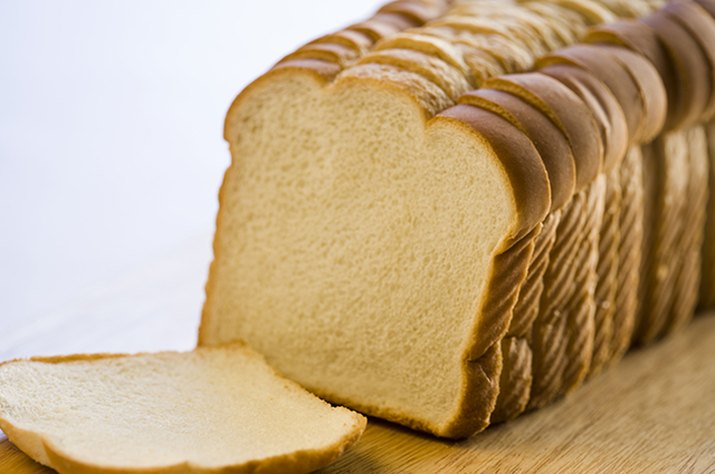
3. Partially Hydrogenated Oil
The FDA has required food manufacturers to list amounts of trans fat on food labels since 2006. These dangerous fats are formed during "partial hydrogenation," the processing of unsaturated fats used in bread and other food products to make them more resistant to oxidation and spoilage. However, if a food contains less than 0.5 grams of trans fat per serving, the nutrition label may legally say "0 grams," and people could unknowingly be ingesting a couple of grams of trans fats from packaged foods throughout the day. To ensure that a product has no trans fat, look at the ingredient label. "Partially hydrogenated oil" is a dead giveaway that the product contains trans fat. Eating trans fat increases the "bad" type of cholesterol (small, dense LDL particles) that is damaging to arteries and increases systemic inflammation, which is linked to heart disease, diabetes and stroke. A Harvard School of Public Health analysis found that "eliminating trans fats from the U.S. food supply could prevent up to one in five heart attacks and related deaths." Because of this, many health experts advise eating no trans fat at all. Find fresher bread that doesn't use these harmful fats.
Read more: 21 Foods That Sound Healthy But Are NOT!
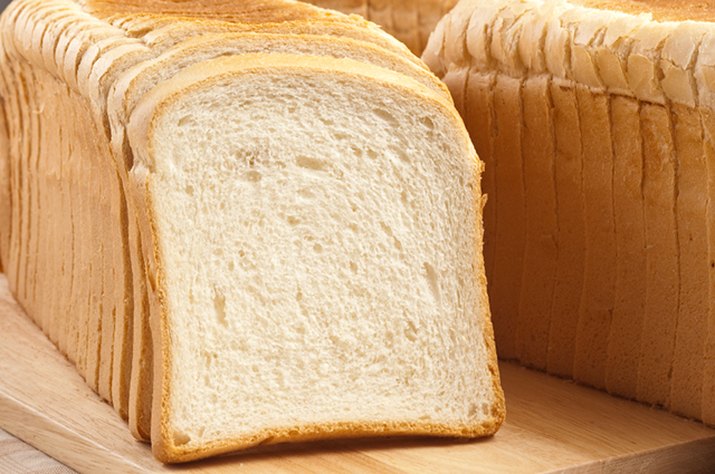
4. Sugar
Sugar serves many functions in bread products. After the obvious role of producing a sweet taste, sugar can also increase the volume of breads by providing food for yeast, help produce a finer, more even texture and retain water, which makes bread more moist and tender and delays staling. So what's the problem? It's not news that many of us consume too much sugar. The Dietary Guidelines for Americans recommend getting no more than 3 to 8 percent of calories from sugar, yet average consumption is 16 percent. Eating too much sugar can increase triglycerides and LDL cholesterol, both of which increase the risk of heart disease. Overconsuming sugar calories can also lead to weight gain, hormone disruption and diabetes. Although some breads contain a sweet element (e.g., honey wheat or cinnamon raisin), it's smart to make sure that sugar isn't providing the bulk of calories in your bread.
Read more: 15 Reasons to Kick Sugar Today!
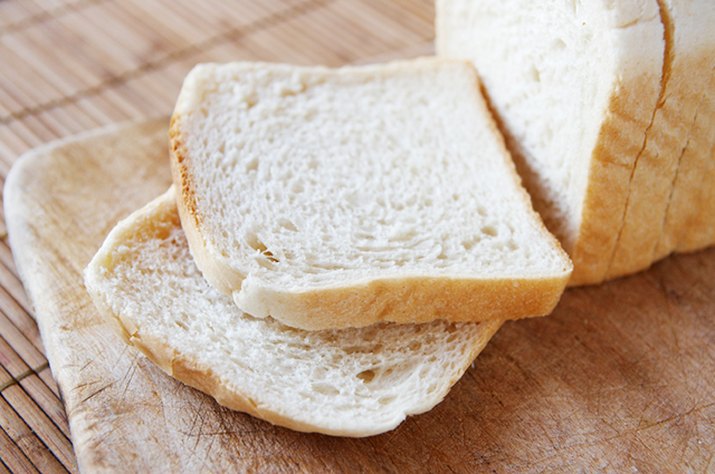
5. Monoglycerides and Diglycerides
Monoglycerides and diglycerides act as emulsifiers in bread, pulling together the water- and oil-based ingredients that have trouble combining on their own. This makes bread softer, improves the texture of the dough and prevents staling. Despite their scary-sounding names, mono- and diglycerides are safe to eat and are the most frequently used emulsifiers in the food industry. Although they are not harmful to human health, they are a sign of industrial food production. Higher-quality products tend not to use them, and for good reason: Other food-based ingredients, such as egg yolks and milk, can act as emulsifiers and provide added nutrition as well. Many homemade bread recipes don't use emulsifiers at all. In contrast, large-scale commercial bread production relies on these additives to ensure product uniformity. In an effort to eat a healthful diet based largely on whole, fresh foods, it's best to stick with products containing ingredients familiar to the home cook. You don't want to see too many labels with mono- and diglycerides in your pantry. There are many higher-quality bread products on the market. Choose ones that don't contain these additives.
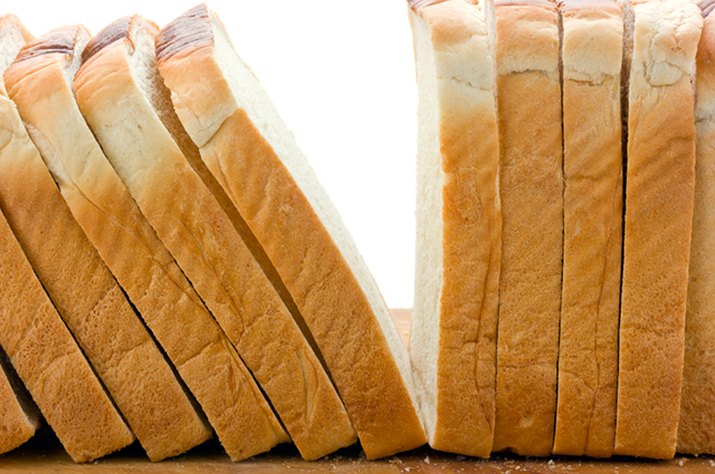
6. Butylated Hydroxyanisole (BHA)
BHA is an antioxidant used as a preservative to prevent rancidity, which is the chemical deterioration of fats that occurs with exposure to oxygen. Most breads contain small amounts of fat that can turn rancid over time. Rancidity produces an unpleasant odor and flavor, and food manufacturers keen to avoid this change in their products may add commercial antioxidants. Unfortunately, according to the U.S. Department of Health and Human Services 2011 Report on Carcinogens, BHA is "reasonably anticipated to be a human carcinogen." The compound is also listed on California's list of chemicals known to the state to cause cancer. Nevertheless, BHA is still approved for use as a food additive by the FDA. Many consumers and advocacy groups are frustrated by this approval, given the wide availability of safe alternatives that serve the same purpose as BHA. Many of these -- including vitamins E and C -- are even necessary for human health. Data on the potential carcinogenicity of butylated hydroxytoluene (BHT), a related compound, is inconclusive. Choose higher-quality breads that do not list BHA or BHT in their ingredients.
Read more: 11 Banned Food Ingredients Still Allowed in the U.S.
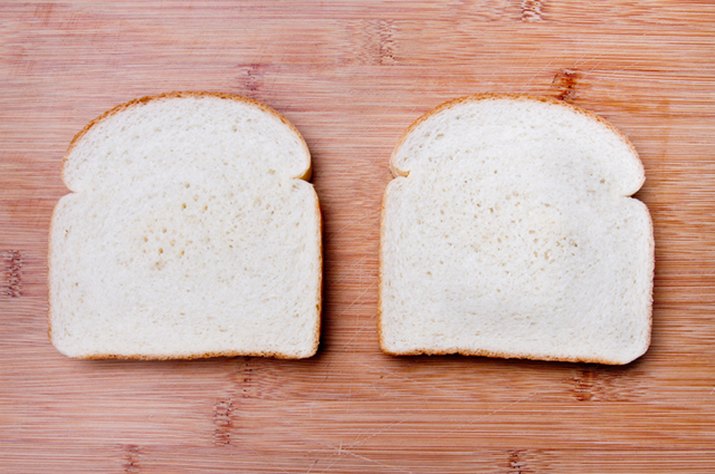
7. Sodium
Most homemade bread recipes call for adding small amounts of salt, which is important for flavor and texture. But too much salt can be a health concern -- especially if you're eating multiple slices of high-sodium bread throughout the day. Americans get too much sodium in their diet. Average consumption is 3,400 milligrams per day -- more than twice the recommended amount of 1,500 milligrams! Over 75 percent of sodium comes from packaged and restaurant foods. Excess sodium increases the risk of high blood pressure, a dangerous condition affecting one in three Americans. The American Heart Association lists bread and rolls on "The Salty Six," their list of popular foods that can add a lot of sodium to your diet. Some popular brands have as much as 230 milligrams per slice, while others have 0 milligrams. Because sodium recommendations are given in milligrams per day and people eat different amounts of bread, there is no threshold of sodium-per-slice that's recommended for good health. Be smart: Compare bread labels when shopping, and choose brands with lower sodium content.
Read more: 20 Sneaky Sources of Sodium
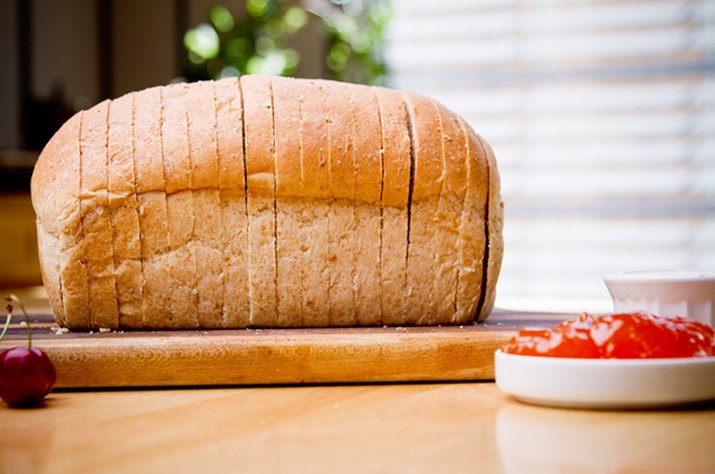
8. Caramel Coloring
Although most people may be familiar with "caramel coloring" from the list of ingredients on a can of soda, the additive is also commonly used to darken the color of breads or baked goods -- especially dark wheat or rye breads. Health concerns related to consumption of caramel coloring are due to certain contaminants, namely 2- and 4-methylimidazole (2- or 4-MEI), that may be produced as a result of processing. The U.S. National Toxicology Program found that these chemicals cause cancer in mice, and the World Health Organization considers them "possibly carcinogenic to humans." Because of this California's Environmental Protection Agency added 4-MEI to its Proposition 65 list of chemicals known to the state to cause cancer and mandated that foods and beverages containing the chemical (above a specified threshold) carry a warning label. Although the FDA "has no reason to believe that there is any immediate or short-term danger presented by 4-MEI at the levels expected in food from the use of caramel coloring," it is best to avoid the ingredient.
Read more: Sign Up to Receive the FREE LIVESTRONG.COM Weekly Health and Fitness Newsletter
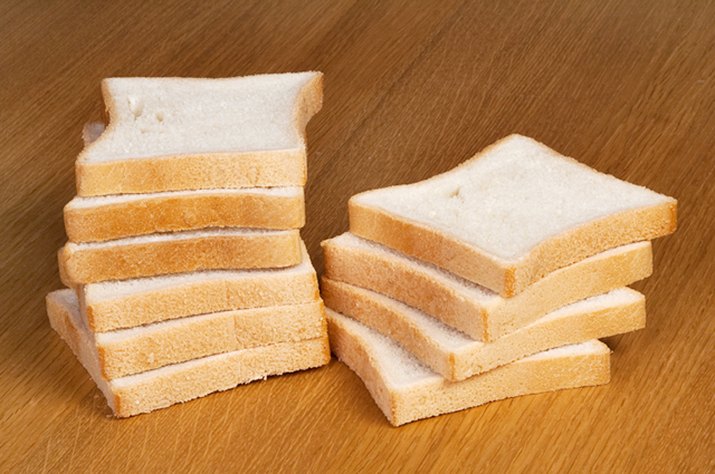
9. High-Fructose Corn Syrup (HFCS)
High-fructose corn syrup (HFCS) on a bread label is a bad sign. The sweetener -- often made from genetically modified corn -- is preferred by food manufactures because it is cheaper than sucrose (table sugar), which is made from sugar cane or sugar beets. In addition to adding sweetness, HFCS has other desirable properties that make it an attractive ingredient for bread makers. Compared to sucrose, HFCS produces better browning during baking, and it keeps bread moist for a longer period of time. Because HFCS is so ubiquitous, it makes a major contribution to the 360 calories of added sugars that Americans consume each day. If you're eating toast with breakfast and a sandwich for lunch, you may unknowingly be filling your diet with empty calories from HFCS. Unfortunately, excess calorie consumption is not the only concern. Studies show that excess fructose can lead to higher triglycerides, a risk factor for heart disease, and decreased insulin sensitivity, a precursor to diabetes. Because of the negative publicity surrounding HFCS over the years, many food manufacturers are reducing or eliminating it from their products. It should be relatively easy to avoid bread made with HFCS.
Read more: 15 Reasons to Kick Sugar Today!
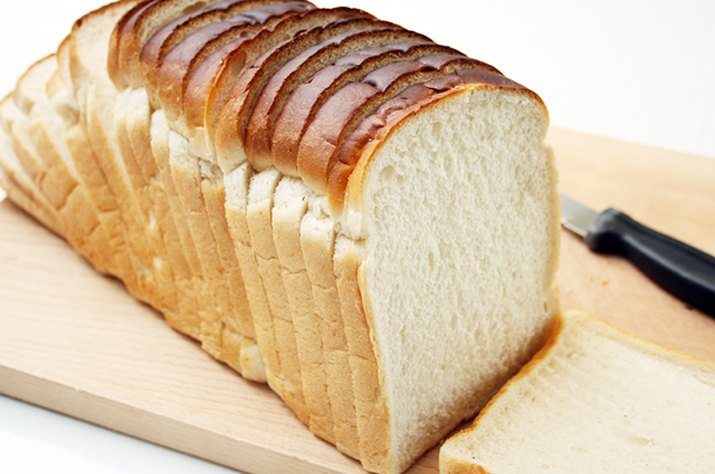
10. Soy
Soy shows up often in bread as either soybean oil or soy lecithin. On the surface, neither ingredient is cause for concern. Lecithin is found in many plant and animal foods and is a dietary source of the nutrient choline. It acts as an emulsifier, keeping water and oil from separating and preventing rancidity. Soybean oil provides fat for added flavor, richness and texture, and unless it's partially hydrogenated (which leads to unhealthy trans fats), the fat is safe to consume in appropriate amounts. The concern with soy-based ingredients is that they are likely to come from genetically modified soy. In 2013, 93 percent of the soybeans planted in the United States were of a genetically engineered variety. The scientific community hotly debates the perceived harm of genetically modified ingredients, but many consumers are sufficiently concerned to want to avoid GMO foods. If you're concerned, look for the term "100 percent organic" on the label: This assures that every ingredient in the product is organic and not genetically modified.
Read more: Should You Be Eating Soy?

Tips on Buying the Best Bread
Commercial breads are industrially processed foods that often contain ingredients that benefit a product's texture, taste and shelf life, but have the potential to negatively impact human health. Certain antioxidants and dough conditioners are deemed possible carcinogens by a variety of governmental agencies, and yet they are still approved for use in food. Sweeteners and certain fats are linked to weight gain, heart disease and diabetes. It's important to note that not all unfamiliar ingredients are dangerous. For example, lecithin may be difficult to pronounce, but the compound is found in egg yolks and soybeans and contains the nutrient choline. So, just because you don't recognize an ingredient name doesn't mean it's harmful. Still, for optimal health, it's best to choose whole, homemade or bakery-fresh breads as often as possible. You will easily identify their ingredients (flour, yeast, water, salt) as those common to bread and you won't have to worry about additives -- you just might have to consume it quicker or freeze it to prevent spoilage.
Read more: 10 Easy Ways to Cut Bread From Your Diet

The 7 Healthiest Bread Brands
For those times when convenience matters and you must opt for store-bought bread, here is a list of recommended brands to help you make the healthiest choice possible and avoid unnecessary and potentially harmful ingredients: 1. Food For Life (also known as Ezekiel's) (foodforlife.com), 2. Alvarado Street Bakery (alvaradostreetbakery.com) 3. Manna Organics (mannaorganicbakery.com), 4. Silver Hills (silverhillsbakery.ca), 5. Dave's Killer Bread (daveskillerbread.com), 6. One Degree Organic Foods (onedegreeorganics.com), and 7. Rudi's (rudisbakery.com).

What Do YOU Think?
Were you surprised to learn about any of these additives that appear in bread sold in U.S. grocery stores? Do you check the labels to watch out for some of these ingredients? Which types of bread do you currently purchase? Do you have any recommendations of bread brands that don't contain these additives? Share your thoughts by leaving a comment below.
Read more: 21 Foods That Sound Healthy But Are Not
Video of the Day
Advertisement
Video of the Day
- Center for Science in the Public Interest Food Additive Safety Summary
- FDA: Questions & Answers on Caramel Coloring and 4-MEI
- FDA Consumer Info About Additives and Ingredients
- American Heart Association (Sodium)
- International Agency on Cancer Research, WHO (Potassium bromate)
- University of California Davis, Nutrition and Health Info Sheet (HFCS)
- USDA Adoption of Genetically Engineered Crops in the US (Soy)
- USDA: Can GMOs be used in organic products?